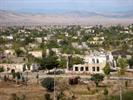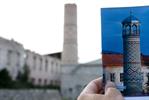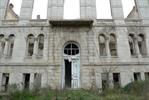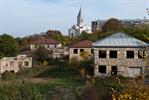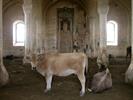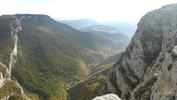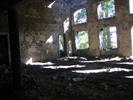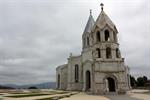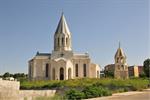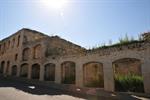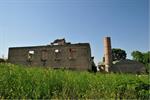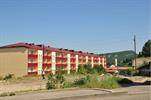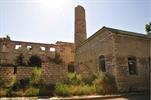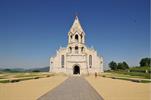Shusha is considered Azerbaijan's main cultural heart which adds to the general bitterness felt over the town's continued occupation. Shusha sprang to prominence when Panakh Khan's re-born Khanate of Karabagh built the immodestly-named Panakhabad here. The khan erected a palace reminiscent of a Kew Garden greenhouse and he and his successor son, Ibrahim encouraged artists, writers and thinkers to congregate in what later became known as the 'Conservatory of the Caucasus'.
The name Shusha ('glass') comes not from the brittle structure of the palace but from a challenge by Persia's eunuch-Shah Mohammad Aga. As the ruthless Persian army approached, their leader supposedlv warned Khan Ibrahim 'God is pouring stones upon your head. Sit ye not then in thy fortress of glass'. However, thanks to Mohammad Aga's sudden death, the city held out and the ironic title 'Shusha' stuck. Nonetheless by this time Ibrahim Khan had already fled and in his absence the whole Karabagh government was overthrown and executed by Ibrahim's nephew. Amongst those to die was the great writer and philosopher Mollah-Panakh Vagif who had been Ibrahim's foreign minister.
Shusha's reputation for invincibility may have been one of the many factors which led Azeri leaders in 1992 to provide woefully inadequate protection for the city against Armenian attack. Shusha's carpet collection was rescued and taken to Baku but some of its cultural monuments (busts of Hajibeyov, Natavan et al) were lost, only to be miraculously salvaged from a Georgian metal dealer who'd bought them for scrap. The bullet-ridden busts are now displayed behind the National Gallery in Baku.
Today Shusha is in a sad state in contrast to the city of Khankandi (known to Armenians as Stepanakert) which has now been rebuilt.
Once the cultural capital of the Azeris in the region (before the war of course), it is quite different from Stepanakert. The main difference is it is much easier to see signs of the recent conflict here. This was sort of the last stand of the Azeri forces. Once the Armenians took control of the city, the war was pretty much over. Many buildings still lie in ruins and there are numerous bullet holes sprayed along the walls. There are a couple of old mosques here, destroyed of course. And while some effort is made to rebuild, or at least tidy up, some areas, the mosques are left to rot.
The town itself, set on a precipice overlooking the impressive gorge of the Karkar has several points of interest. Part of the medieval town wall remains and two 19th-century churches have been restored, both striking with their very pale stone.
The heavily restored Ghazanchetots Cathedral has been spared no expense. The massive, almost white Ghazanchetsots Cathedral (Ghazan refers to some very large vessels which were gifted to the church) was built between 1868 and 1887. Like all Karabagh churches it was closed during the Soviet period and saw service variously as a granary, a garage and a munitions store. Inside it is plain apart from some modern paintings. Oddly enough the bell tower, decorated with figures of angels playing musical instruments which stands beside it, was built earlier, in 1858. All but one of the angels decorating the bell tower were destroyed in the war, the remaining one being christened the guardian angel of Artsakh'. After renovation the church and bell tower, with new angels, were re-consecrated in 1998.
The other church is the so-called green church (kanach zham), in the northwestern part of the town. It has a silver metallic cupola and was completed in 1847. Elsewhere in the town mosques survive: religious buildings were not destroyed after the war. The Church in 2005 took the most interesting one, the Mets Meched Mosque of 1883, under its protection and invited the Shiite authorities in Teheran to send specialists to restore it. In Soviet days it served as the town's historical museum.
Across the square from the mosque the bazaar, soon to become a functioning market again, is being rebuilt to its original design. Down the road opposite the bazaar is an overgrown second mosque of 1875. Shushi Museum displays the history of Shushi in a mid-19th-century house.
The roads in the town are largely rebuilt, all from money from Armenians abroad.
If you're planning a trip to Azerbaijan you may be interested ▶ Azerbaijan highlights - For those who prefer to go unbeaten path, to explore less visited places and check national charisma of this small country in Southern Caucasus on the edge of Europe.



